The KS Lemon Starrburst pepper is a sensation in the pepper enthusiast community. It checks all the boxes for an exciting pepper variety: Amazing looks, delicious flavor, and the right amount of heat.
I, like many other pepper growers, was instantly fascinated by the KSLS pepper. When I first acquired seeds, it was as thrilling as it gets to plant a new pepper. In 2020, we grew our first plant (in an aluminum can), and got to taste it.
In this article, I’ll share everything you need to know about the Khang Starr Lemon StarrBurst pepper. The KSLS has inspired thousands of growers around the world, so let’s see why.
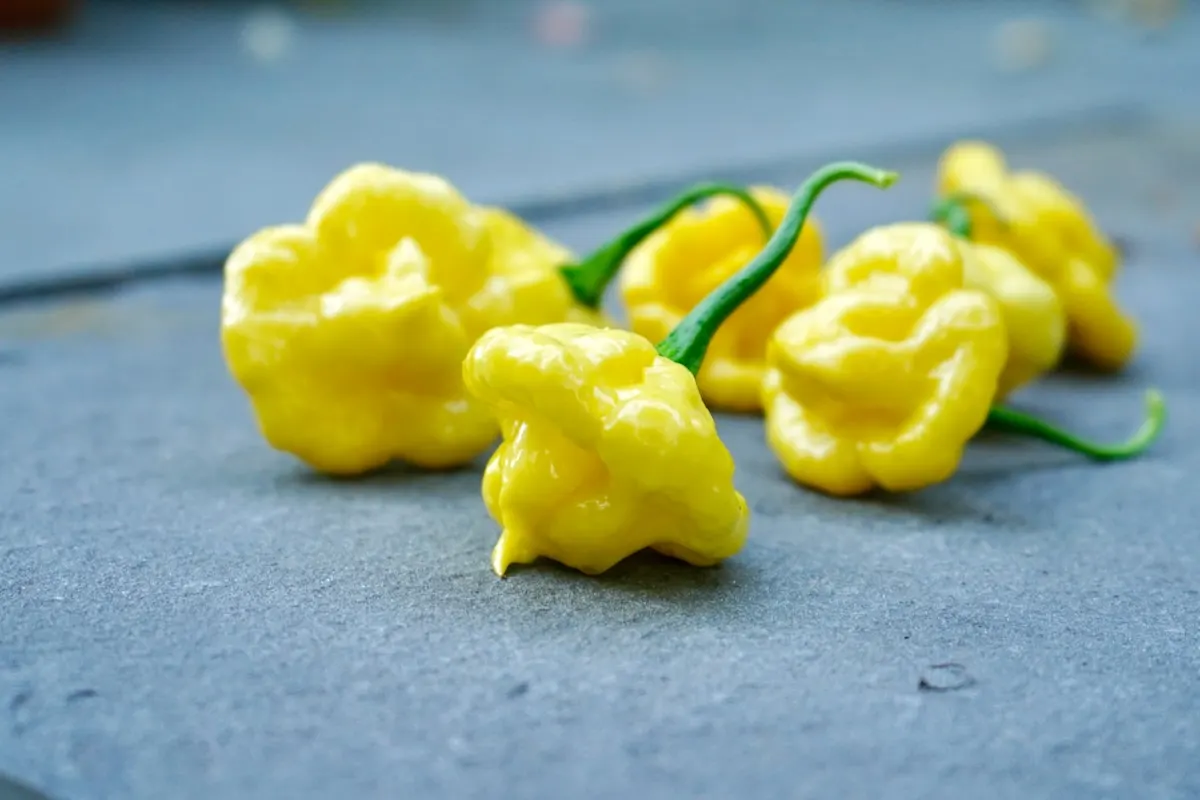
How The KSLS Was Created
Khang Starr has always shown an interest in crossbreeding, and in 2016 he decided to cross two favorite varieties: the Bahamian Goat and the MOA Scotch Bonnet. This manual cross resulted in the Lemon StarrBurst, along with the Peach StarrKist (a similar, peach-ripening pepper).
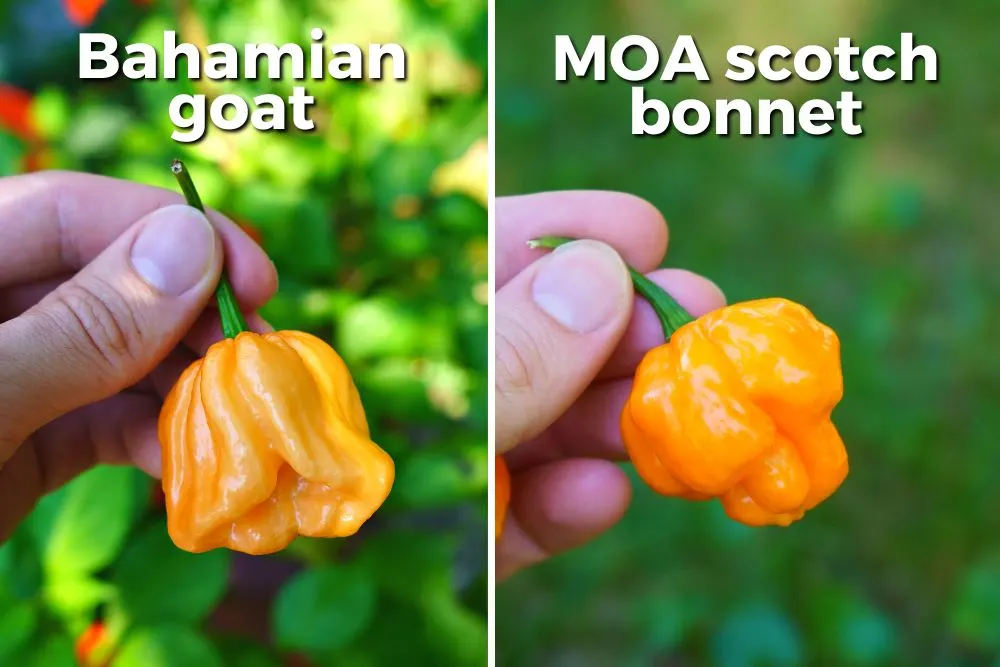
Through multiple generations of stabilization, the KSLS pepper is now considered fairly stable, breeding true to form. After the initial cross, Starr shared the pepper on his YouTube channel, and began sharing seeds with the pepper community.
Since then, the KSLS pepper has been grown all around the world. There is even a map showing all the places this pepper has been grown, which includes every continent except Antarctica (maybe one day…).

If this inspires you, you can try your hand at crossbreeding peppers at home. But be warned, this process takes a long time, so patience is key.
KSLS Pepper Appearance
I think what truly makes the KSLS pepper so appealing is its appearance. It has a flying saucer shape with a squashed scotch bonnet-like underside, and a small, pointed stinger at the bottom.
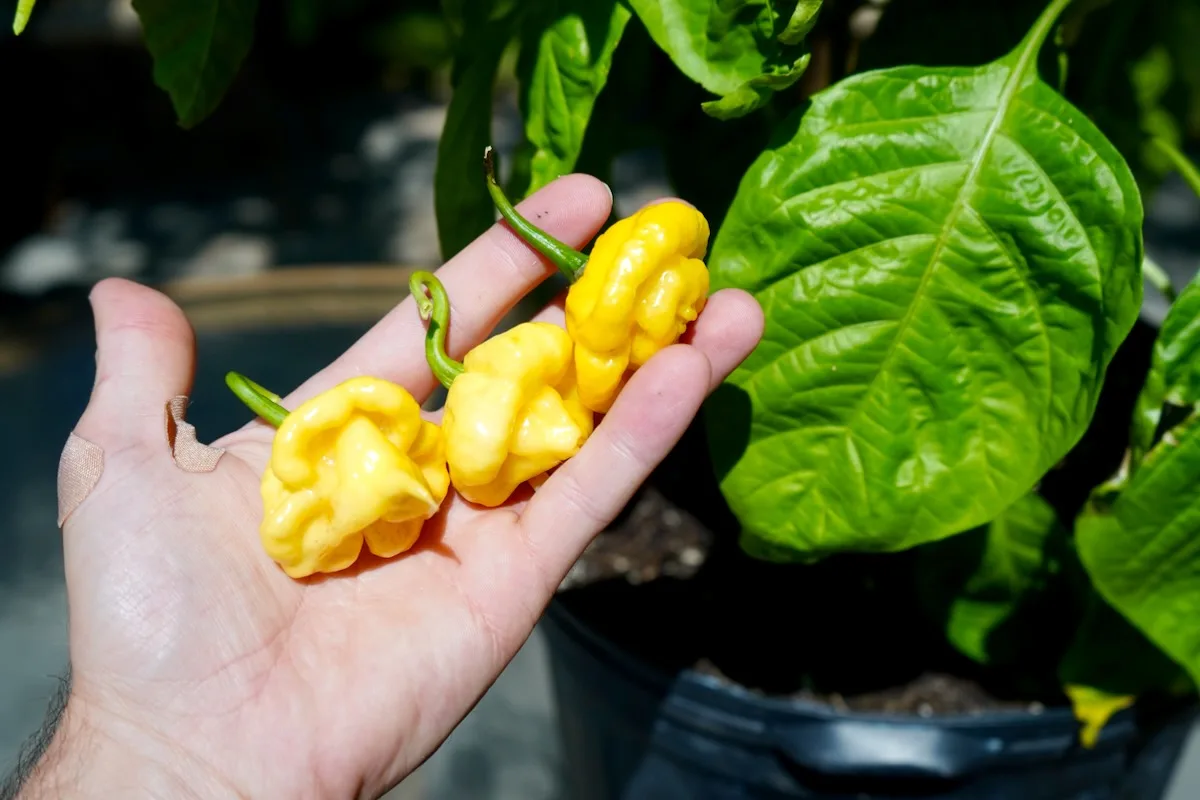
That, coupled with its yellow color makes the KSLS a beautiful thing. There’s something about a bright yellow pop of color in the garden – it’s a happy-looking pepper.
The overall appearance isn’t too aggressive, like the 7 pot primo is, but has just enough flair to make it look somewhat dangerous. And that’s with good reason, because this pepper is pretty spicy.
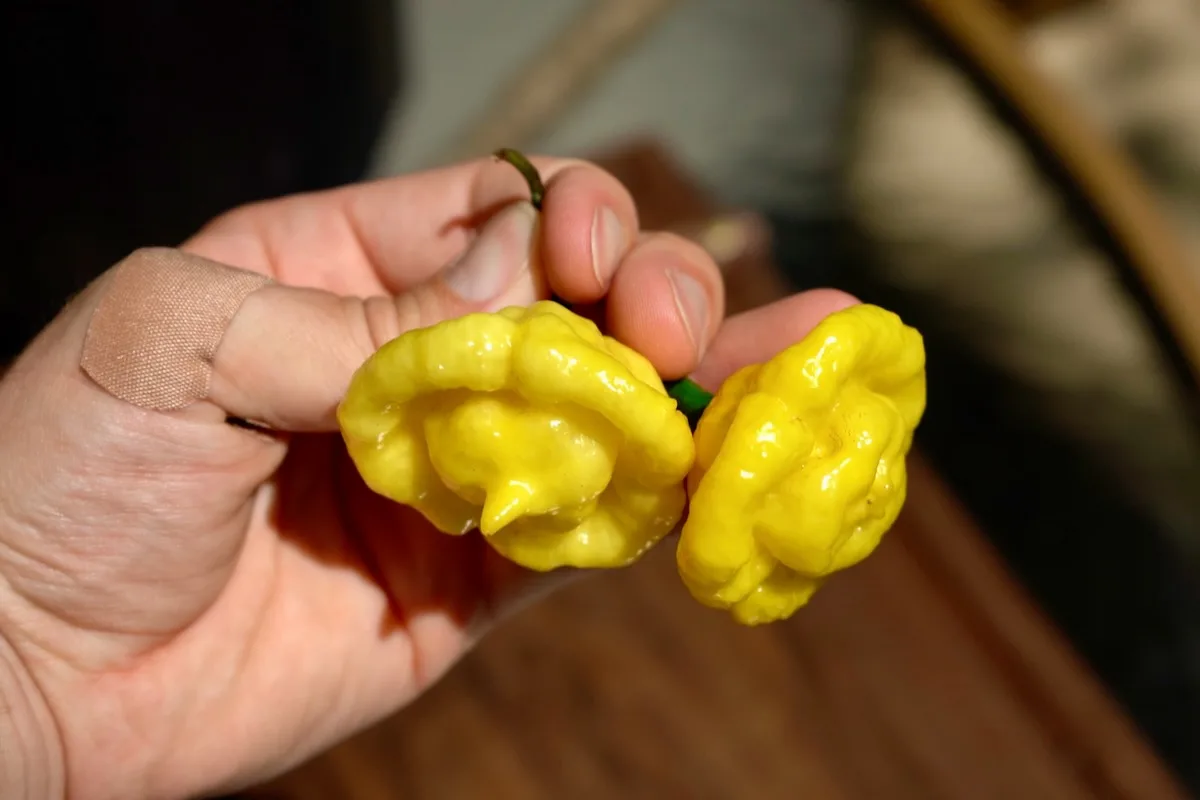
KSLS Pepper Heat Level and Flavor
You can’t get the full experience of the KSLS pepper just by looking at it. Thankfully, the flavor is just as amazing as the look, with plenty of heat as well.
How hot is it?
While no official Scoville testing has been done on the KS Lemon Starrburst, it is generally agreed that they are a bit milder than a standard habanero or scotch bonnet. That said, this pepper packs plenty of heat for most hot pepper enthusiasts.
The KSLS pepper likely has a Scoville rating between 100,000-200,000 SHUs. This is comparable to a scotch bonnet or habanero pepper for heat. Since its parent was an MOA scotch bonnet, this heat range makes sense.
Flavor
On to my favorite trait of the KSLS pepper: Flavor. The taste of this pepper is citrusy and fruity, similar to a sweet lemon. Many yellow peppers in the C. chinense species have this characteristic, but the KS lemon starrburst seems to be more bright and pronounced.
Even the aroma of a freshly cut KSLS pepper is distinctly lemony and fresh. If you think you like the flavor of a habanero, you’ll definitely want to try this pepper.
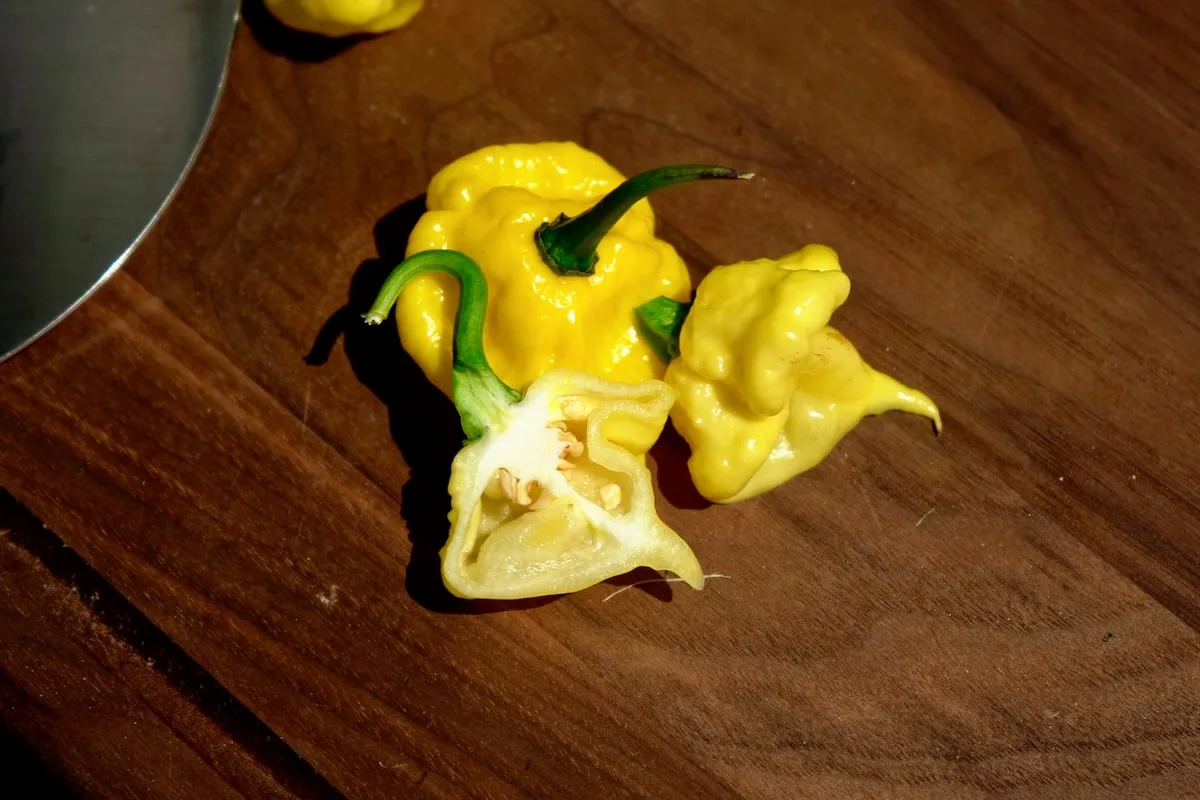
Some peppers have a bitter aftertaste, while others may have an overpowering floral note. Not this one. The flavor is smooth and bright with no downsides whatsoever. I can’t overstate the amazing flavor of this variety!
Growing The KSLS Pepper
We have grown the KS lemon starrburst in both containers and in the ground. Our best result was growing in a large pot, about 7 gallons in volume.
The plant is strong and bushy with medium productivity. The leaves can grow to be very large, and productivity usually starts later in the season. Provide support with a stake or cage, as the plants easily grow 3-4′ tall under ideal conditions.
Avoid over-feeding, as these plants produce best with medium fertility. Too much nitrogen, and the plant may not produce well. Water evenly and avoid periods of dry soil (unless you’re trying to stress your plants for hotter peppers).
KS Lemon StarrBurst Pepper Seeds
So, you want to grow your own KS lemon starrburst, huh? I don’t blame you! Historically, Khang Starr wanted this pepper’s seeds to be strictly traded, never sold. To this day, it is still best to try your luck in the pepper lover’s community to see if you can trade for some KSLS seeds.
However, Starr has since given his blessing to seed sellers who wish to offer his seeds for sale. So, you can now find lemon starrburst seeds for sale on a number of websites.
Here are a few options:
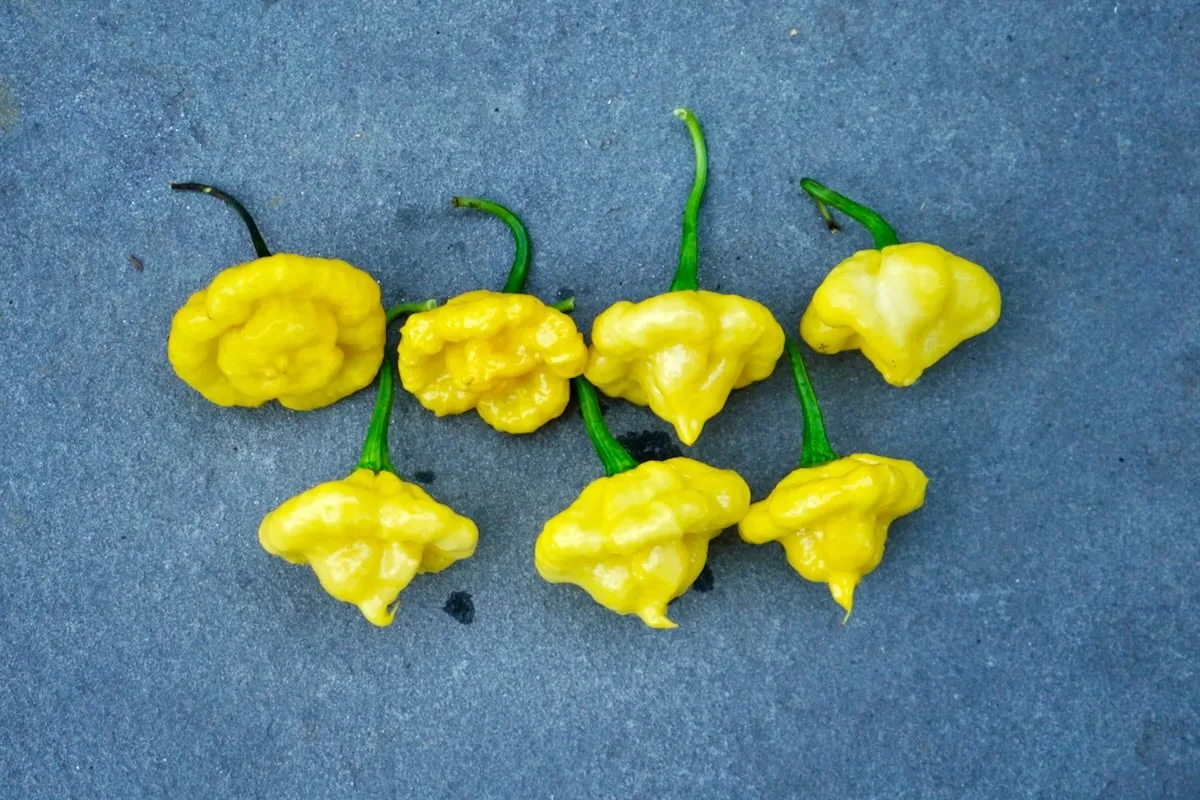
I hope you learned something new about the KS lemon starrburst pepper. This is truly one of my favorite hot pepper varieties, not only for its look and flavor, but for inspiring me to deep dive into the world of growing and crossbreeding peppers!
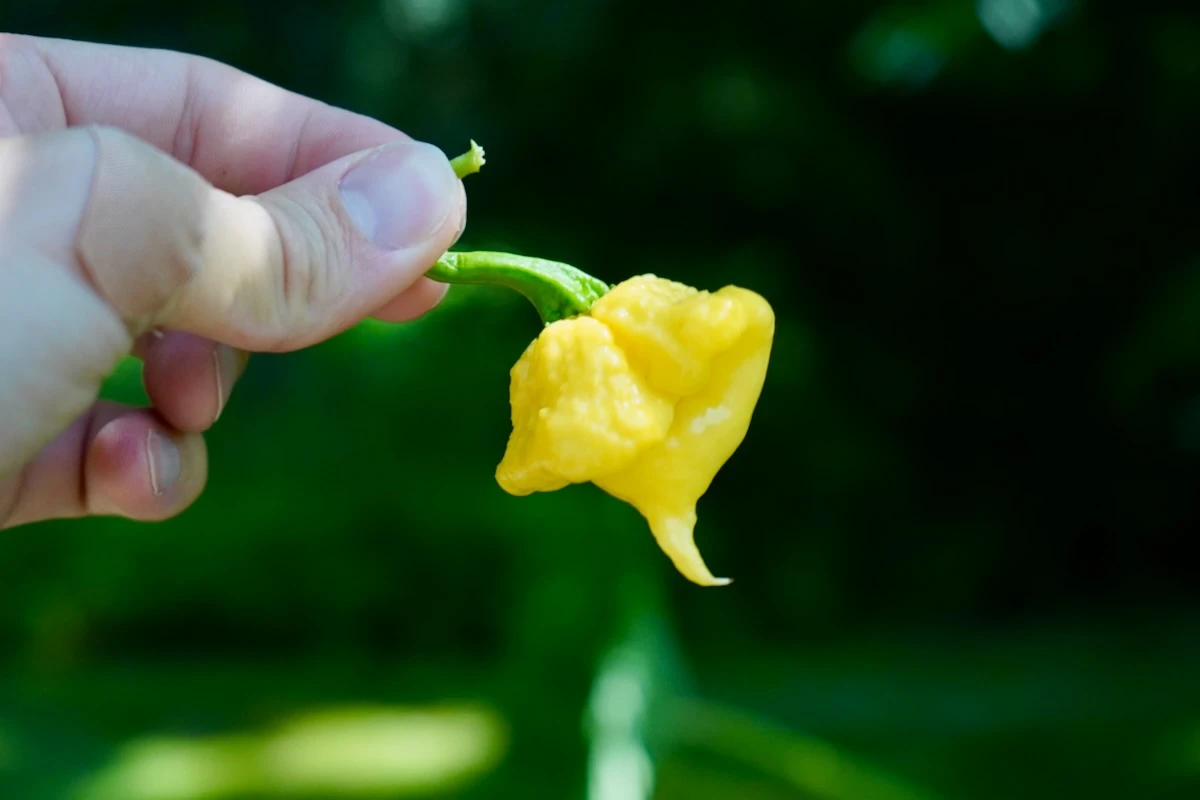

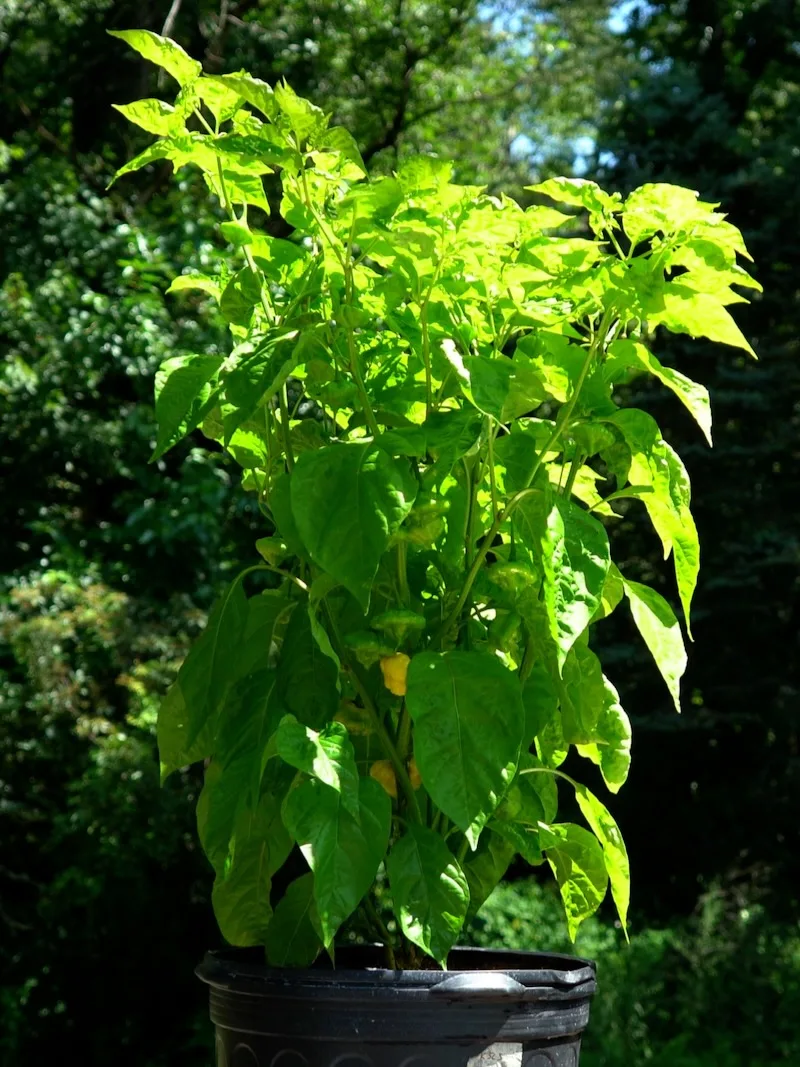

Angie
Sunday 10th of December 2023
How long does it take for the Ksls lemon pepper to germinate and harvest
peppergeek
Monday 11th of December 2023
Similar to habanero, so around 5-6 months from sowing to ripe harvest. Germination should take anywhere from 5-10 days.
Alex
Saturday 7th of October 2023
Could this pepper be used to make jerk chicken?
peppergeek
Tuesday 10th of October 2023
Absolutely!
Kayden
Tuesday 12th of September 2023
I don't know why you're talking about about as hot as a habanero. I was told, when I tried it, that it was halfway in between a habanero and a ghost pepper. As I only cried about 20 minutes, I'd have to agree with that assessment
Ridzwan
Monday 4th of September 2023
How to get this seed?